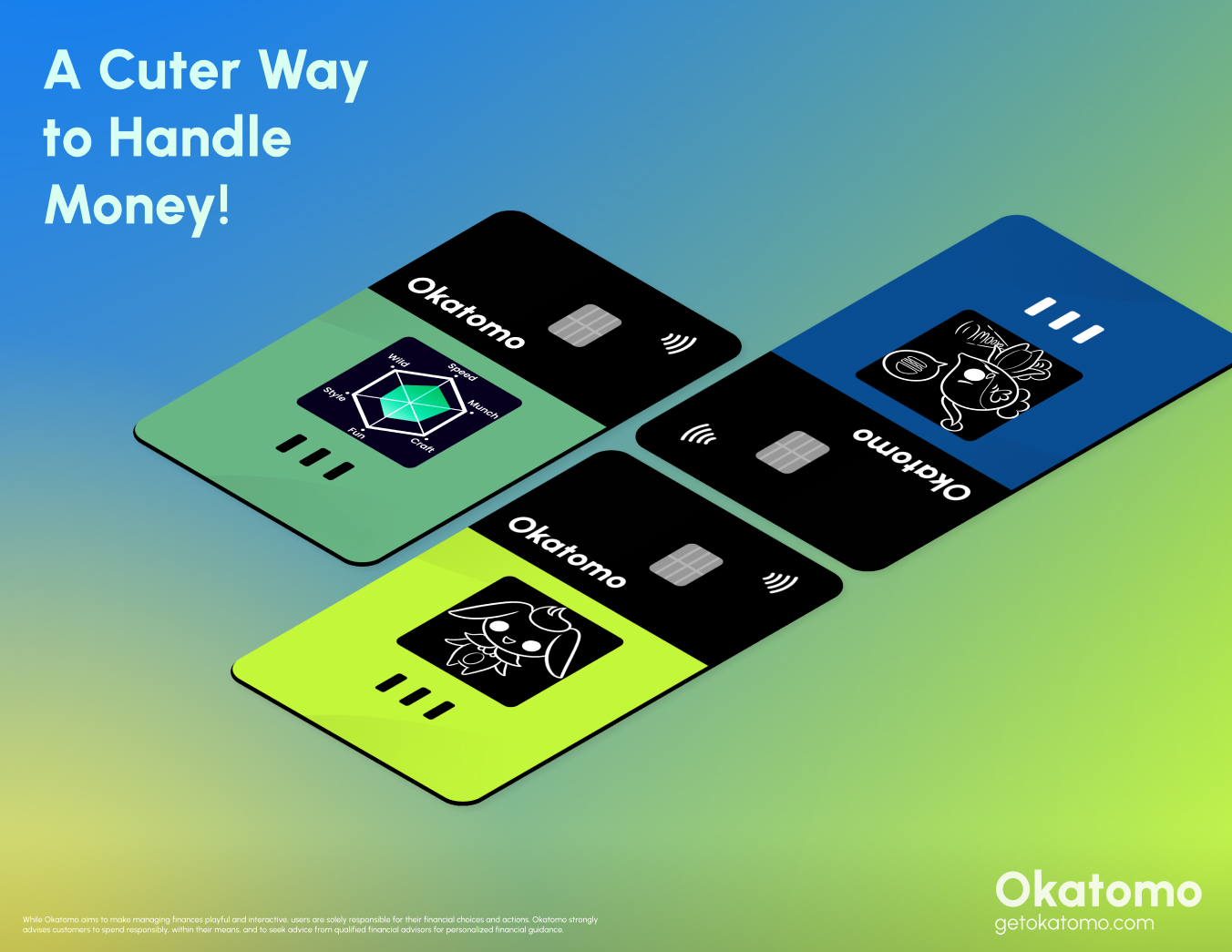Okatomo
Speculative Design: creation of a gamified credit card
Overview
📅
Date
Summer 2023
🙍🏼♂️
Team
Four Members
Objective
Our objective was to explore the intersection of technology, psychology, and finance, questioning the traditional boundaries of how we interact with money. This was created within a speculative design class intended to challenge the status quo and traditional perspectives through creative and thought-provoking design concepts.
Role
Within my team, my primary role was translating conceptual design ideas into hardware and software which supported the physical instillation. I also designed the look of the card.
Concept
A rapid ideation team brainstorming session resulted in three potential ideas:
- a tipping score system for restaurants
- a student loan-based dating app
- an intelligent monetary oracle
We presented these concepts to peers and teaching staff. After their feedback, we decided to blend the monetary oracle and social tipping score, resulting in the creation of Okatomo.
Product
Okatomo is a credit card designed to influence user spending habits through gamification and emotional manipulation. The physical prototype features an integrated screen displaying a virtual pet named Okatomo, whose displayed desires prompt cardholders to make specific purchases. The name “Okatomo” was selected by my teammate, roughly translating to “money friend” from Japanese.

Hardware
My key responsibility was to identify and integrate compatible hardware (and later on create the software) enabling components to work together to create our interactive Okatomo exhibit. This involved careful consideration of specifications to ensure all the components were compatible.
Card Design
I designed the credit card to house a Raspberry Pi Zero microcomputer and a 1.3" micro LCD screen. Mounted on the outside were RFID enabled plastic cards, with a hole cut to allow the display to show through. I adhered a card sticker design to the top of the card.
Terminal Design
To create an immersive spending experience required building a card processing terminal, resembling those found in stores. This terminal featured an LCD screen, RFID receiver, and Arduino microcontroller, all using code I wrote.

Software
To bring the virtual character to life and ensure a seamless user experience, I developed a server coded in NodeJS. This server facilitated the appearance of the character on the credit card, displayed transactions on the payment terminal, and brought people through the experience. Connected to the server was web clients for the payment terminal, introduction terminal, and lastly a Python client for displaying imagery on the card.
Impact
The project received positive feedback and won first place from a design jury. The project was also submitted to SIAT's 2023 Fall Showcase.

If you've got any questions about this project, don't hesitate to reach out!

